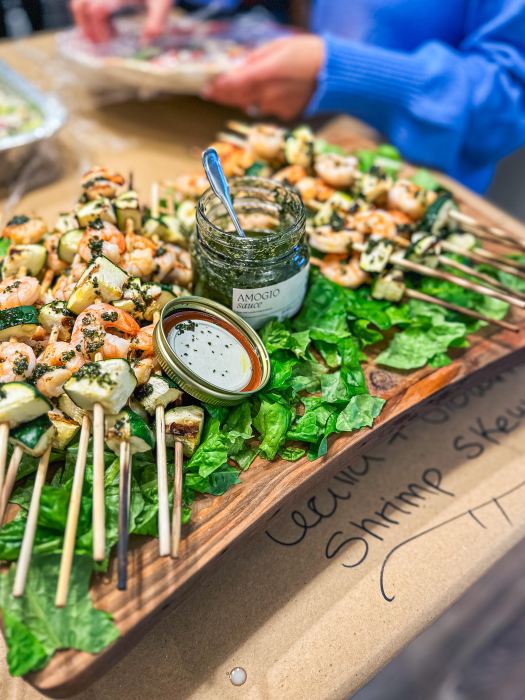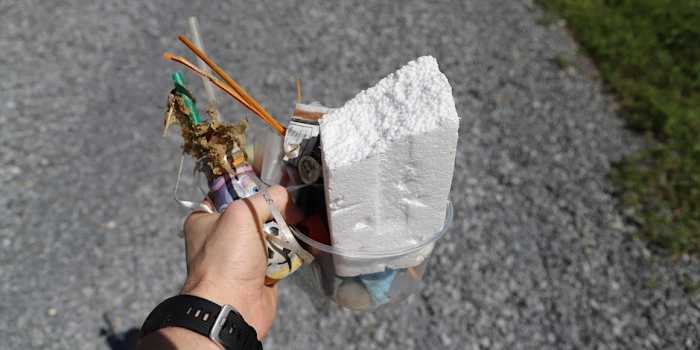
There’s nothing wrong with showing a bit of skin. Especially if it’s steamy.
Because while they may appear a rather mundane ingredient, wonton skins are an inexpensive and easy way to jazz up your cooking.
So let’s start with the basics. Wonton skins (also called wonton wrappers) are thin sheets of dough made from flour, egg and water. That’s basically the same formula as Asian egg noodles, and not all that far off from Italian pasta, except wonton skins are cut into round and square sheets.
You may never have bought wontons as a raw ingredient, but if you’ve ever had fried egg rolls or steamed dumplings in your Asian take-out, you’ve eaten them.
Because wonton skins essentially are vehicles for containing other ingredients, their strength is their versatility. They can be filled with just about anything, from ground or chopped meat and vegetables, to cheese and sweet fillings.
They also can be cooked any number of ways — pan-fried, deep-fried, baked, steamed, even boiled. You also can cook them before you fill them.
For an easy party (or kid) food, coat a mini-muffin tin with cooking spray. Line each cup with a wrapper, spritz with more cooking spray, then bake at 375 F for about 8 minutes, or until the wrappers are lightly browned and crisp. Once cooled, the wonton cups can be filled with whatever nibbles you like.
You’ll find wontons in virtually every grocer, usually in the produce section next to the tofu and other Asian ingredients. They are available in a variety of sizes, though 3-inch squares tend to be the most versatile. The larger sizes can be a bit unwieldy once filled.
When using wontons to make dumplings, they need to be sealed shut after being filled. You can fold the edges over onto themselves (like folding a sheet of paper in half); you can gather the edges together over the center (like a purse); or you can place a second wrapper over the first.
However you do it, be sure to lightly wet (dunking your fingers in water is plenty) the edges of the wrapper. This effectively glues them shut.
So what should you fill them with? For ideas, check out the Off the Beaten Aisle column over on Food Network:http://bit.ly/JvL47u
___
Steamed Spicy Pork Dumplings
Start to finish: 45 minutes
Servings: 6
For the dumplings:
1 egg
2 tablespoons hoisin sauce
2 tablespoons soy sauce
1 tablespoon toasted sesame oil
1 teaspoon hot sauce
1 pound ground pork
1/2 cup finely grated carrots
4 finely chopped scallions
1/4 cup chopped fresh cilantro
8-ounce can water chestnuts, finely chopped
12-ounce package 3-inch square wonton wrappers
For the dipping sauce:
3 tablespoons toasted sesame oil
2 tablespoons rice vinegar
2 tablespoons soy sauce
1 tablespoon chopped fresh cilantro
1 teaspoon sugar
Pinch red pepper flakes
In a large bowl, whisk together the egg, hoisin, soy sauce, sesame oil and hot sauce. Add the pork, carrots, scallions, cilantro and water chestnuts, then mix well.
One at a time, place 1 tablespoon of the pork mixture in the center of each wonton. Dunk your fingers in water, then use them to wet the edges of the wrapper. Gather the edges of the wrapper over the filling, pinching them together to form a small purse. Repeat with the remaining filling and wrappers.
In a large saute pan, bring about 1 inch of water to a boil. Set a bamboo or other steamer basket over the water, then lightly coat it with cooking spray.
Working in batches if necessary, arrange the dumplings in the steamer (they should not touch), then cover and steam for 15 minutes.
Meanwhile, prepare the dipping sauce. In a small bowl, whisk together all ingredients. Serve the dumplings hot with the dipping sauce.
Nutrition information per serving (values are rounded to the nearest whole number): 500 calories; 240 calories from fat (48 percent of total calories); 27 g fat (8 g saturated; 0 g trans fats); 90 mg cholesterol; 44 g carbohydrate; 21 g protein; 3 g fiber; 1,350 mg sodium.


































